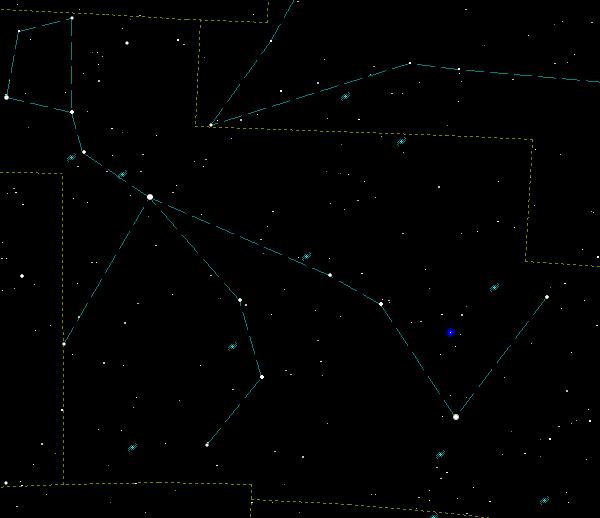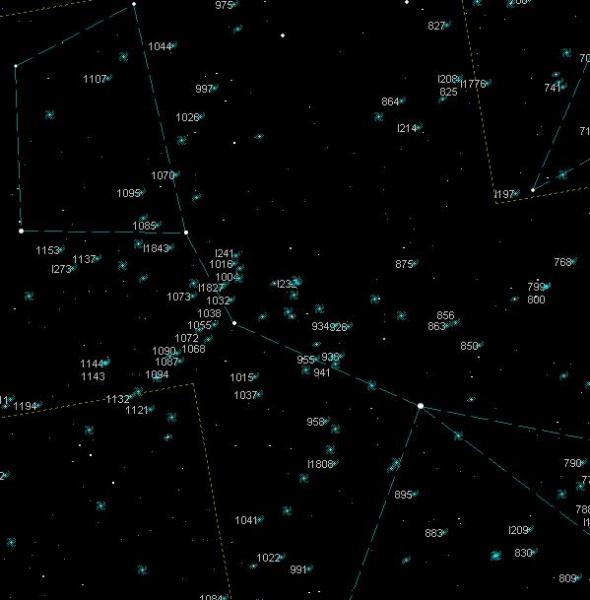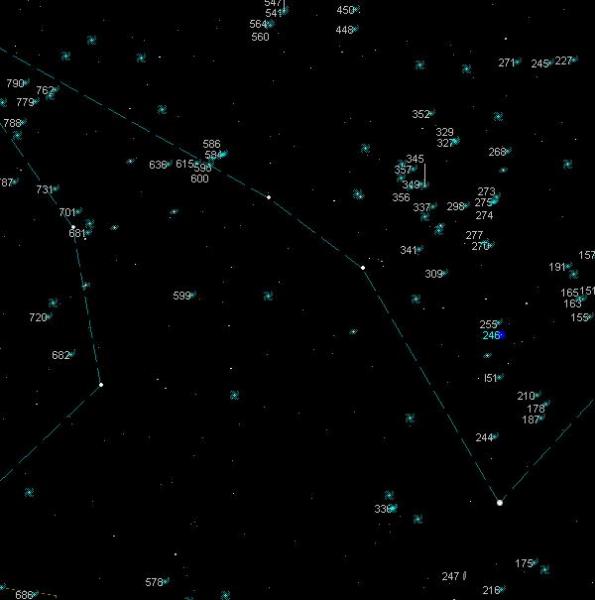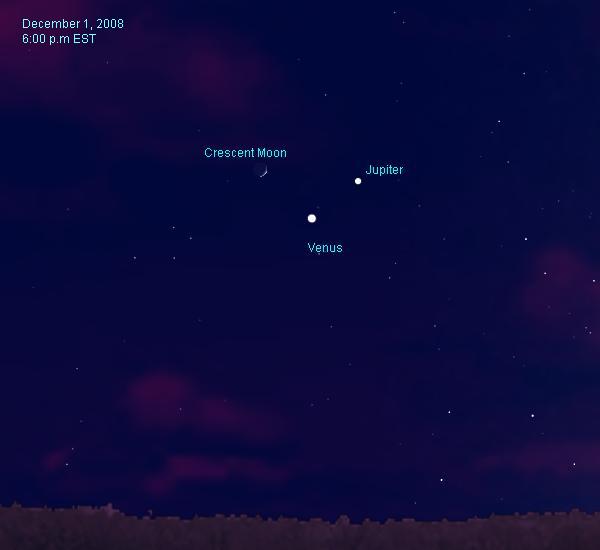Cetus – A Whale Of A Constellation
This month’s constellation plays a role in the famous mythological story called the “Royal Family of Constellations”. As the fable went, King Cepheus and Queen Cassiopeia sacrificed their daughter Andromeda to the Sea Monster, Cetus. Our hero Perseus happened by with his slain prize - the Medusa’s head, stowed in a potato sack.
As the story continues, he showed the famous head of snakes to Cetus and as legend states, the monster turned to stone. Andromeda was freed from her shoreline shackles and flew off with our hero, on the winged horse called Pegasus.

The sea monster or whale might be gone as the story goes, but it rests forever in the sky. The boundaries of Cetus occupy 1,231 square degrees of celestial real estate and is fourth in area. Although Bayer lists Menkar as the constellation’s alpha star, Diphda is truly brighter by a third of a magnitude. Also known as Deneb Kaitos, Diphda is a K0 supergiant star thus making it a bit cooler than the Sun. Lying 96 light-years (ly) from us; it is one of the brightest X-rays stars around. Diphda appears to have a corona like our Sun and measure a few million degrees Kelvin.
Cetus also is home to a few double stars. Looking somewhat like Albireo Struve 299 shows palettes of yellow and blue at magnitudes 3.5 and 7.3 respectively. Another double star called Beta 395, has an orbit of only 25 years. Its two components are listed as magnitude 6.3 and 6.4.The famous variable star Mira has a minimum to a maximum period of 331 days with values as bright as 2nd magnitude all the way down to 4th and sometimes fainter. When it reaches maximum brightness, it stays at this level for a couple of weeks and this should occur next month.

The constellation Cetus is without a doubt, a well-populated constellation. There is definitely no shortage of objects to hunt down and observe. In fact, there are around 390 NGC objects down to 15th magnitude. For instance, the only Messier object within the confines of Cetus is M77. This Seyfert galaxy lists as one of the brightest objects within Cetus beaming at magnitude 8.8. It has a large core together with a delicate arm structure that can still be resolved from its 47 million light-years (ly) distance.
Before leaving M77, look about a degree southeast for a couple of dimmer barred spiral galaxies catalogued NGC 1087 and NGC 1090. At magnitudes 11.2 and 12.4 respectively, you should be able to pick them up using an eight-inch telescope and no moon.
A very long and slender elongated galaxy measuring three-quarters the moon’s width is found about three degrees from Beta Cetus. NGC 247 is a gem of a galaxy and is one of my favourites. Listed at about 12 million ly, NGC 247 is one of the closest to our home galaxy. Many star-forming regions appear in this wonderful object.

The only planetary nebula in Cetus belongs to NGC 246. AKA the Skull Nebula lays 1,600 ly away and almost 2 ly wide. Here is another classic example of how our Sun will meet its fate about 4 billion years from now.
For a challenge, try to hunt down IC1613 close to the border with Pisces. Deemed by many astronomers as the faintest galaxy of the local group of galaxies. At 2.2 million ly is closer to us than the Andromeda Galaxy. This dwarf irregular structure is estimated to only be 16,000 ly in diameter and contains a mere 100 million stars. It measures 16 arc minutes of sky. Good luck with this one.
NGC 908 is a nice spiral galaxy. Measuring 6 by 2 arc minutes and listed as magnitude 10.9 and 60 million ly away, a large scope will reward you with a couple of spiral arms. Then we have NGC 428 that has some structure to one side. At 70 million ly this irregular-shaped galaxy seems to have merged with a smaller galaxy a long time ago. Many bright star-forming regions are evident.
| Object | Type | Magnitude | R.A. | Dec. |
|---|---|---|---|---|
| Struve 299 | Double star | 6.5 | 02h 43m | +03° 14' |
| Beta 395 | Double star | 7.5 | ||
| M 77 | Galaxy | 5.7 | 02h 42m | -00° 01' |
| NGC 1087 | Galaxy | 9.4 | 02h 46m | -00° 30' |
| NGC 247 | Galaxy | 9.2 | 00h 47m | -20° 46' |
| NGC 246 | Planetary nebula | 12.0 | 00h 47m | -11° 53' |
| IC 1613 | Galaxy | 11.3 | 01h 04m | +02° 07' |
| NGC 908 | Galaxy | 8.0 | 02h 23m | -21° 14' |
| NGC 428 | Galaxy | 12.3 | 01h 12' | +00° 59' |
This month’s Leonid meteor show might be something to watch. Although a bright waning gibbous Moon will definitely interfere, the International Meteor Organization is predicting a possibility of a normal count of 130 per hour around 9 hours UT but could be as low as 25. So take the time to watch and hope for high rates with some bright meteors. Moonlight will pretty well wash out the North Taurids meteor shower on November 11 (Remembrance Day). The shower only calls for 15 meteors per hour.
The Space Shuttle Endeavour is scheduled for a Nov. 14th launch at 7:55 p.m. EST. STS-126 will be the last service mission to the aged Hubble Space Telescope. If all goes well, the HST will be given a new lease on life which should bring it to the year 2012. This is when the James Webb Space Telescope is expected to be deployed up in space and relieve the Hubble of its duties. By then the HST will be 22 years old. Follow the mission from launch to touchdown as well as behind the scenes on NASA TV.
Venus is now climbing higher in the evening sky and is inching closer to Jupiter. In fact, the two brightest planets will be separated by two degrees on the last day of November. The thin crescent moon will also play into the picture for what to be a beautiful portrait on December 1st.The ringed wonder Saturn is making its appearance at a decent hour. At the beginning of November, it rises at 2 a.m. locally and by month’s end will clear the eastern horizon by midnight. Its ring system is tilted even more than last year as we move closer to September 2009 when the wide the very thins rings will be seen edge-on.
And lastly, full Moon will occur at 1:17 eastern time on the 13th. This is called the Beaver Moon.
Until next month, clear skies everyone.
Gary Boyle

